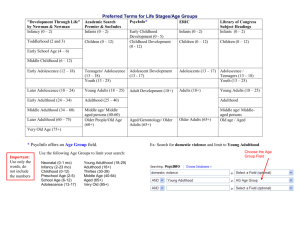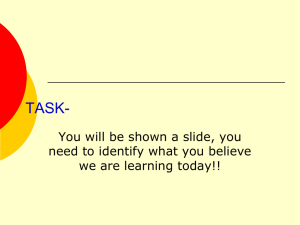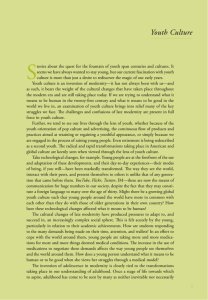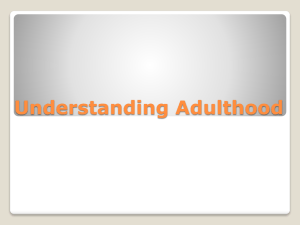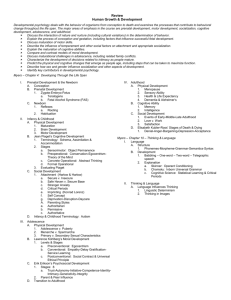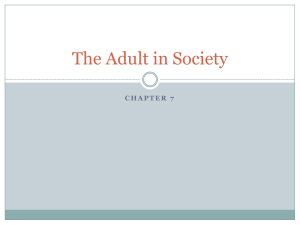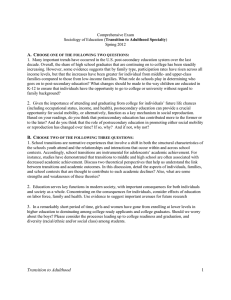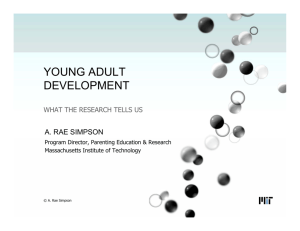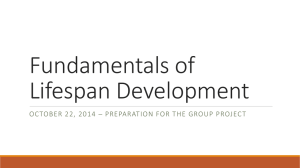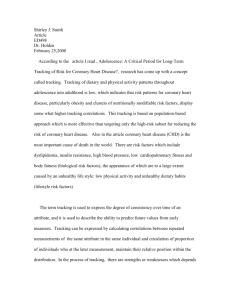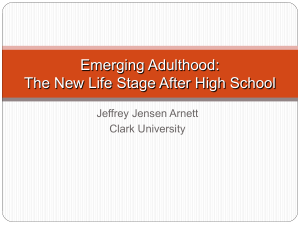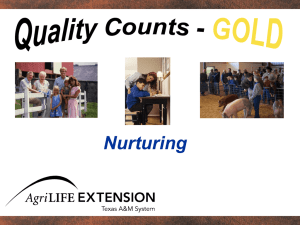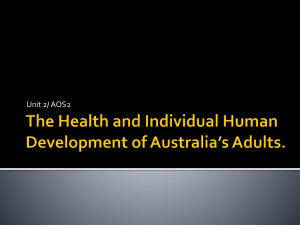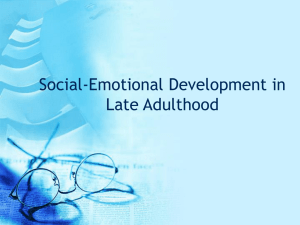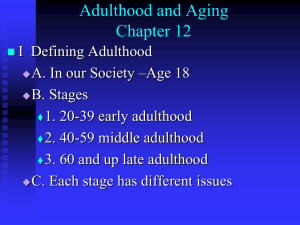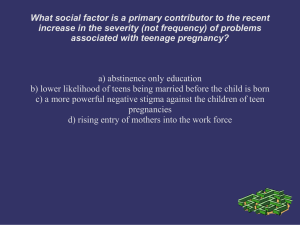mexican migrants and their children: family dynamics in an era of
advertisement
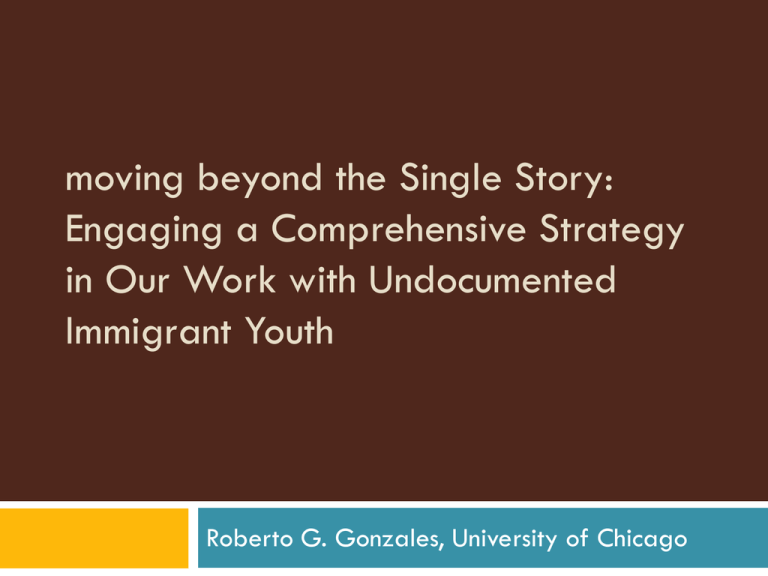
moving beyond the Single Story: Engaging a Comprehensive Strategy in Our Work with Undocumented Immigrant Youth Roberto G. Gonzales, University of Chicago The Danger of the Single Story When we show people as one thing over and over and over again that is what they become To insist on the single story of someone is to flatten their experiences and overlook the many other stories that formed them What is their single story? What about here? Success Narratives The Dilemma of Urgency Unauthorized Settlement: a new era of immigration 11.1 million people living in unauthorized status (Pew 2010) Those who migrate as children number 2.1 million (MPI 2010) Plyler’s Dilemma Plyler V. Doe (1982) provides K-12 Access Did not address education beyond high school Laws allow them to go to school, but they cannot work, vote, travel outside of the country, receive financial aid for college, and drive in most states TODAY Tens of thousands leave high schools every year encountering uncertain futures Lack of Continuity K-12 EXPERIENCES LATE ADOLESCENCE From Childhood to Adulthood Academic Research Educational Struggles and Attainment Risks and Resiliency Importance of Mentors and Social Networks The Transition to Adulthood The Early Transition As undocumented children make transitions into late adolescence, they move from spaces of belonging to rejection, from inclusion to exclusion, from de facto legal, to “illegal” WAKING UP TO A NIGHTMARE Well you know what, I never actually felt like I wasn’t born here. ‘Cause when I came here, I was like ten and a half. I went to school, I learned the language. But I first felt like I was really out of place when I graduated from high school, when I tried to get a job. Because I didn’t have a Social Security number….Well I didn’t even know. I mean, I didn’t even know what it meant. You know Social Security, legal, illegal. I didn’t even know what that was. I asked my mom and [she] said, “it’s in the process.” In the process? I didn’t even know what that meant. I don’t know why she would tell us that. –Rodolfo BLOCKED PATHS-UNCERTAIN FUTURES But when I actually wanted to get a job, I couldn’t because I didn’t have a Social Security number. So, my first job was cleaning carpets, helping my dad. –Rodolfo That really sucked. I had been all like I’m going to get my car before all of you, but I couldn’t. It was unfair and I had to, you know. What could I do? How could I tell them I can’t, I can’t drive? I can’t get my license. It really messed me up. –Sergio STIGMA AND CHANGED SOCIAL PATTERNS I just stopped going out. I was tired of asking for a ride and coming up with excuses and every time it was a hassle with my friends. They wouldn’t let it go. They wouldn’t let it go. So I started telling them I was too busy with school. At first they didn’t like that, but after a while they stopped inviting me. I end up spending a lot of weekends by myself because most of my friends don’t call me anymore. It’s such a hassle to explain everything to people. And it has affected the way I am when I meet new people. I used to be very outgoing, but I try to keep my guard up, try not to get too close to people. –Grace The Transition to Adulthood Protected Status K-12 education is free and legal Most institutions in childhood do not require legal status Transition to Adulthood Late adolescence triggers legal limitations: Working Driving Financial Aid Nightlife Awake to a Nightmare Succession of blocked opportunities Fear, stigma, changed social patterns Forced decisions— reveal or conceal Physical/ emotional manifestations Post-High School Experiences College-goers Early-exiters DIVERGING TRAJECTORIES MECHANISMS -Supportive learning environments -Trusting relationships with adults -Peer networks -Access to resources Transition to Adulthood MECHANISMS -Negative school experiences -Resource-poor families -Falling through the cracks -Exiting school early -Entering “illegal” adult world OUTCOMES -Form positive networks -Develop resiliency -Preserve the “buffer” OUTCOMES -Little trust in adults and institutions -Left to fend for themselves -Daily contact with legal limitations -Forced underground Completing the Transition to Adulthood A MASTER STATUS The people working at those places, like the cooks and the cashiers, they are really young, and I feel really old. Like what am I doing there if they are all like 16, 17 years old. The others are like señoras who are 35. They dropped out of school, but because they have little kids they are still working at the restaurant. Thinking about that, it makes me feel so stupid. And the factories, too. They ask me,“Que estas haciendo aqui? You can speak English. You graduated from high school. You can work anywhere. –Esperanza CONCLUSIONS Interaction between contexts – legal, cultural and developmental – creates a dramatic shift in experiences Stigma creates a second border that reinforces legal exclusions The experience of “illegality” – living in a narrowly constricted world in the shadows – is a relearning process Key supports within the community and school can mediate the effects of undocumented status While a great deal of divergence happens at earlier transitions, over time trajectories converge CONCLUSIONS Delayed or blocked mobility caused by a lack of legal status is leveling educational motivations, stressing parent-child relationships, contradicting notions of small-c citizenship and creating the conditions for a new underclass. These processes are also rendering our measures of intergenerational mobility by educational progress irrelevant by breaking the assumed link between educational attainment and material/psychological outcomes after school Implications for Policy Today’s children are growing up under arguably harsher contexts – more than 1 million are children – while those now adults are in jeopardy of “aging out” of eligibility Moving the legalization discussion beyond one-size-fits-all solutions, and taking into consideration the complex and varied realities of today’s immigrants Legalization efforts aimed at regularizing undocumented youth have much in common with school reform work Implications for Community School offers one of the few legally permissible pathways Schools – the majority does not go on to post-secondary education Community – very few other options outside of school Most jobs are off limits The transition to illegality has important health implications Clinical – little understanding of the effects of the developmental/legal processes for this unique population THANK YOU rggonzales@uchicago.edu




